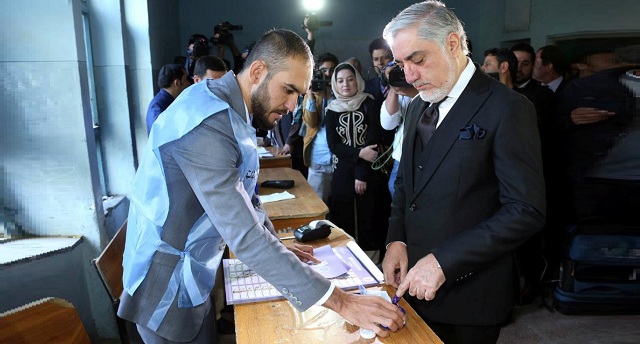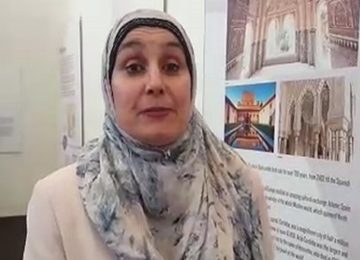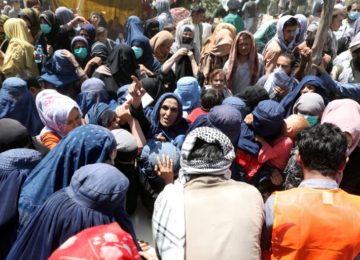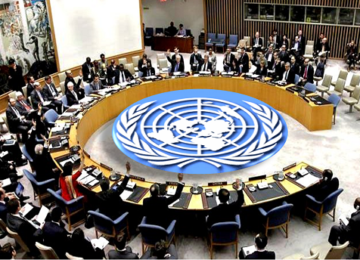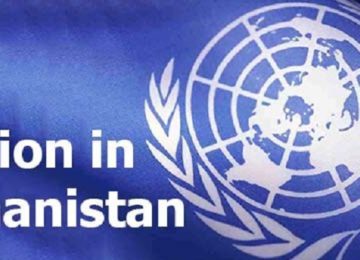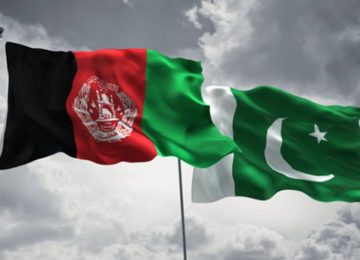October 20, 2018
Afghanistan’s third post-Taleban parliamentary elections have started slowly, with a lot of technical chaos and significant fighting in a number of provinces. Polling hours have now been extended. Even in many areas of Kabul, polling centres had not opened by 9:30am. There are widespread reports of a lack of polling material, electoral staff being unfamiliar with the biometric devices, that are being used for the first time to try to prevent multiple voting, and reports of explosions, attacks and Taleban closing roads and keeping away voters. By noon, dozens of casualties from rocket and mortar fire and explosions had been reported in Kunduz and later in Kabul. Apart from in Daykundi, where the governor held a small ceremony in the capital, Nili, voting began without ceremony. Thomas Ruttig and the rest of the AAN team have put together this initial look at ‘E-Day’ 2018. With reporting from Ali Mohammad Sabawoon (Kandahar), Obaid Ali (Taloqan), Rohullah Sorush (Mazar-e Sharif), Ehsan Qaane (Nili/Daikundi), Said Reza Kazemi (Herat), Fazal Muzhary (Sharana/Paktika) and Ali Yawar Adili and Jelena Bjelica (Kabul).
General observations on preparation and turnout
By noon, according to IEC sources speaking unofficially, only around 3,000 polling centres were open around the country, about 60 per cent (by 10am, it had been 2,300). Measures were underway, the sources said, to increase that number. Voting had been scheduled to close at 4pm, but IEC chairman Abdul Badi Sayyad has now announced at a press conference that polling centres will stay open beyond that, to “compensate” for the lost time. He apologised for the late opening. Sayyad said that polling centres where opening was delayed can now stay open until 8pm today, while in those not open before 1pm, polling would also take place on Sunday, 21 October (media reporting here). (1)
In many areas of Kabul and Herat as well as in Paktika and Balkh, IEC staff arrived at polling centres only at 7am when the centres were due to open. They started preparations and often did not allow observers to watch this. (2) AAN staff observed in a polling centre in Rahman Mena in southeastern Kabul that ballot boxes were not ready and observers were not allowed in, while long queues of voters gathered, on both the women’s and men’s sides. Voting started late at 7:45. AAN received reports from local sources in Paktika that, in a number of polling centres, voter lists were incomplete and many names were missing. (3) IEC personnel in the Paktika capital, Sharana, defending the late start, told AAN that people in the province “only wake up or start working about 8am.” In many places, IEC staff also banned the use of phones with cameras, probably to prevent voters from taking photos of their ballots (a method used to show to candidates who might have paid for the vote that the voter had complied), but also making observation difficult. Those voters then had to leave because there was no provision for leaving phones outside the centres; some may not return to vote. There were complaints that the IEC had not announced this ban.
In Kabul, only a few polling centres opened as scheduled at 7am. They included Amani High School where President Ashraf Ghani and IEC chairman Sayyad cast their votes. Ghani held a short, uninspired speech, explaining once more why the vote in Ghazni and Kandahar had been postponed and assuring voters there they would not lose their franchise. In Herat, as AAN witnessed, voting mostly began around 8am. Afghan media have published photos of a number of provincial governors casting their votes.
It appears that in many rural areas, however, there has been no voting, either after threats on the eve of elections or because the Taleban closed roads or there was fighting (reported from at least ten provinces). The first security incident in the morning was reported from Khushi district of Logar province where a polling station came under fire from a nearby hill shortly after polling opened officially. According to security sources in Kabul, there have been 107 incidents countrywide, 27 of them in Kabul province by noon. Most of the other incidents were reported from Kunar and the northeast, particularly Kunduz.
At noon, one of the country’s major observer organisations, the Free and Fair Election Foundation of Afghanistan (FEFA) said “the situation is out of the control of the IEC.”
According to the spokesperson of the Ministry of Interior, Najib Danesh, quoted by Kabul-based news agency, 4,900 polling centres with more than 20,000 polling stations (4) should have opened in 32 of Afghanistan’s provinces. The figure looks overstated – very likely this is the number the Independent Election Commission (IEC) intended to open. By mid-morning, anyway, many were still shut.
On the eve of the elections, the IEC had given a number of 5,074 polling stations it intended to open (a few days before the elections, it had used a figure of “around 5,100”), but Kandahar has 225 polling centres and voting there was delayed after the murder of Provincial Police Chief General Abdul Razeq on Thursday (read AAN analysis here) , so neither figure is fully accurate. Even before that, another 2,292 polling centres originally envisaged to be used were dropped, as the Afghan security forces could not see themselves able to defend them (more detail in this AAN overview).
The IEC had also officially claimed that there would be no voting in ten districts in five provinces, Musa Qala, Dishu, Nowzad, Reg/Khaneshin and Baghran in Helmand; Kakar/Khak Afghanin Zabul; Yamgan and Warduj in Badakhshan; Dahana-ye Ghori in Baghlan and Kohistanat in Sar-e Pul. However, AAN found from local sources that in Zabul, for example, there was no voting before noon in four districts – Arghandab, Mizan, Syuray and Kakar/Khak Afghan – due to ongoing fighting. The way to another Zabul district centre, Shahr-e Safa, was also closed due to fighting in the morning, so that election material only arrived briefly before noon. In Shajoy, the wrong election material was sent to one polling centre. This had to be corrected before voting could start. After noon, government forces started operations in two Zabul districts where the election process had also not started, Syurai and Mizan.
At the IEC press conference the day before the elections (19 October), IEC chairman Sayyad had called on the Taleban to allow the people to vote by announcing a ceasefire on that day. This plea remained unheeded. Over the days immediately before the election, the Taleban had instead issued a series of statements: they called on teachers and ulema not to support the elections, while the movement’s military commission threatened to close “all major and minor roads” on election day and called on people to stay indoors (quoted here). In early October, the Taleban had called for a boycott, stating it would “leave no stone unturned” to prevent the elections from taking place, but adding the movement would “instructs all its Mujahideen (…), while taking extensive and intensive care of civilian Afghan lives and their properties” and only attacking those who “secure” the polls (quoted here).
Turnout
Turnout has, so far, been mixed. In the large cities and many of the provincial centres, it has been good. Footage from Afghan media has shown queues of both male and female voters in Kabul, Herat, Maimana, Jalalabad, Lashkargah and Gardez, as well as some districts near to cities like Injil and Guzara in Herat province, and Batikot near Jalalabad, and Panjshir province as a whole. The tendency of good turnout in the cities and nearby districts was also confirmed by AAN staff members in Herat and Mazar-e Sharif.
In some places, such as Hazara-dominated west Kabul and some parts of Tajik-dominated Khairkhana, the turn-out has been massive. At one polling station in Khairkhana, however, voters reported to AAN that there were “more observers than voters” and that three candidates had distributed money to voters. In one centre in Nili, AAN saw 500 voters already queuing at 6:30am. In Mazar-e Sharif, it was good in the morning, but had dropped significantly by noon. In other places, there have been fewer voters. At one centre in Paktika’s capital Sharana, only one out of 25 registered women appeared to vote this morning.
In many places, voters arriving early or on time were left waiting because of the lack of IEC preparation; anger was already growing. In Qarabagh district, north of Kabul, angry voters blocked the main Kabul-Parwan highway with burning tires in protest that no election material had been delivered.
Government officials talking to AAN who wanted to remain anonymous played down the problems, saying there had only been “some minor difficulties” with IEC staff being late.
Biometrics
As to the new biometric procedures, AAN found that in Paktika’s provincial capital Sharana, the process took between four to eight minutes – rather than the one minute envisaged (see AAN reporting here). It appeared the Biometric Voter Verification (BVV) devices did not easily read voters’ fingerprints, but most of the devices did work. Those not functioning were sent for repair or to be changed.
In at least four polling centres in Daykundi’s provincial capital Nili the biometric devices did not work. In the polling centre in Sang-e Mum High School most voters had to queue two to three hours before they could cast a vote. A group of ten observers, mainly from candidates, AAN talked to at this polling centre said the process was very slow. The longest step in voting process, AAN observed in Nilli, was not fingerprinting, but finding the number of a voter on the voters list. In one centre, where there were problem, some voters left, saying they would come back later.
In several polling centres in Taloqan city there were issues with the biometric system that failed to operate. IEC workers spent more than five minutes on each voter, and it took a long time for the queue controllers to find a voter name on the voter registration list. In few cases AAN noticed, voters had to go from one polling station to the other to find their names.
In Kart-e Bokhdi area of Mazar, an observer told AAN that the polling centre in the area was really crowded and that it had run out of ballot papers. An observer told AAN that many centres had received the wrong voter lists, and that the voters were sent off to wander “from centre to centre” in search of their name.
In Mazar-e Sharif, AAN observed that some voters took photos of the ballot paper while voting. They explained that they have sold their votes and they take photos for proof.
Afghan journalist Ahmad Wali Sarhadi reported via social media from Kharjui, Zabul, that a long line of voters was still standing in the polling station by noon and waiting for the biometric devices to work. In one Kabul polling centre visited by AAN staff, the whole voting process was taking between three and five minutes.

Female voters queue in Sharana, provincial capital of Paktika. Photo: Fazal Muzhary
Security incidents round the country
The most casualties by far were reported from Kunduz. According to an AAN colleague observing the region from Takhar, who spoke to journalists in Kunduz, around 30 people – civilians and members of the security forces – were wounded in the morning as a result of rocket and mortar fire and scattered clashes ongoing in some parts of the city, outside the city centre. According to election observers who spoke to AAN, two mortar rounds hit polling centres in the centre of Kunduz. According to officials from the Kunduz Provincial Hospital, the casualty figures later rose to three killed – among them two IEC staff who were killed at Charkhab secondary school east of the city centre – and 39 others injured.
The shelling in Kunduz had decreased by 11am, as more security forces came in and candidates tried to persuade people to come out and vote, offering transportation. Even so, many people were reported still to be too scared to vote. The Kunduz-Takhar highway remained blocked.
In Kabul, at least 30 people have been taken to a trauma hospital run by the Italian NGO Emergency, including a dead child, AFP reported. Afghan health officials said, there were at least three dead and over 30 wounded,
There were also reports of Taleban rockets fired on Lashkargah (Helmand). By noon, one person was reported injured – in Paktia (more on which below). Explosive devices were used mainly in Kabul, designed, it seems more to scare voters from voting, not to harm then.
The Afghan media has (so far) been notably quiet about security incidents. AAN heard from reliable sources working with the media that there was a tacit agreement between some key media outlets not to report security incidents until noon.
Kabul
The capital had experienced ten small explosions by 12:30pm and one rocket, which landed in the Gulayi neighbourhood of Khairkhana in the city’s north. The first explosions occurred in the south-eastern area of Arzan Qemat (PD 12) in front of a high school polling centre and in Bibi Sara high school polling centre (PD 15). Two mines exploded outside Zabihullah Esmati school in Rahman Mena in southeastern Kabul (PD 8). The centre was temporarily evacuated. An explosion in Qala-ye Shahda (PD 6), in front of the Ahmadi mosque also caused the evacuation and closure off a polling centre. No casualties were reported in Kabul.
Voters from southeastern Kabul said there were sufficient police and NDS personnel, while reports from Hazara-dominated areas in the west said police were scarce.
Herat
Herat, like other cities, has strict security measures. There has been little traffic on the streets inside the city and the roads leading to it from nearby. The streets leading to the provincial government’s seat are all closed to public traffic.
In the contested districts of Obe and Pashtun Zarghun, voters turned out in the more secure areas. In Obe, a young man accompanying his wife, who is an IEC staff member, reported to AAN that people were voting “in good numbers” in about ten polling centres located in safe areas in the district especially those near the district centre. There were problems, he said, in the three remaining centres in the district. There, the Taleban had distributed night letters threatening all those working for or taking part in the elections, that they would kill them and cut off their fingers. In one of those stations, no one had turned up to vote this morning. Security forces had been deployed in order to make voting possible later in the day.
An IEC staff member in Pashtun Zarghun district reported that “Queues have formed for men and women, and people are voting. According to his estimation, there would be a good turnout, with polling centres opened in about 70 per cent of the district. In the remaining 30 per cent, polling centres were closed and not expected to open. (It was unclear whether these were among the 2,292 the IEC said it would not be able to open or additional ones.)
Takhar and Kunduz
Polling centres are operating normally and groups of people are still arriving from villages to the nearest centre to vote. They were less crowded this afternoon. The polling in Takhar has been interesting because it seems more women are turning out to vote than men. The IEC workers and voters are now better familiar with the biometric verification devices and are quicker using them. In two PC, AAN witnessed it taking three minutes for voters to vote.
The capital Taloqan city is quiet with people making only limited movements. NDS has set up checkpoints at the entrances to the city. The army are also stationed around the city and the police are active inside and are in charge of security at the polling centres, where they search all voters. The NDS and the army are searching all vehicles wanting to enter the city. The Taleban destroyed a power line at around 11am, as a result of which at least parts of Taloqan city are without electricity. AAN has further confirmed fighting near Dasht-e Qala and Khwaja Bahauddin district centres. It is not clear whether this has stopped voting altogether in those places. The Taloqan-Dasht-e Qala road has also been closed by the fighting.
Kunduz city has no electricity since the Taleban have destroyed an electricity pylon. They have also closed the Takhar-Kunduz highway for the last two days. This, along with the frequent rocket fire and fighting in the morning kept turnout low. More security forces were being deployed and candidates were sending vehicles to take voters to the polling centres, so the turnout was slowly increasing.
Paktia and Paktika
A small explosive device was planted in Tera High School, just outside Gardez, the capital of Paktia early this morning, but it was defused. In the city, there was a good turnout. In Zurmat district, a Taleban stronghold, only three polling centres have opened in the immediate district centre, in the Muqarabkhel and Batur neighbourhoods and in Zurmat Lycee. All other centres are closed and armed Taleban have been standing in front of them, so that election materials cannot be transferred. A rocket landed at Tamir, the district centre, and wounded one person.
In Paktika, Taleban fighters have fired rockets at the Jehad Mena area, which is about 15 kilometres to the north of Sharana city, as well as at locations in Urgun, Sarhauza, Matakhan and Sarobi districts. No casualties have been reported. According to deputy police chief Hamidullah Omarkhel, 2,000 security forces have been deployed to provide security for the election. They do not allow anyone riding motorbikes into the city, but they do allow cars.
Wardak and Logar
In Maidan-Wardak province, there was no voting in the Sayyedabad and Sheikhabad district centres. Near Sayyedabad, in Tangi-ye Duab, the Taleban have set up a checkpost and are not allowing people into the bazaar to vote. In Sheikhabad, after a local candidate visited the day before the elections, Taleban fighters appeared and started firing into the air. This morning, all the shops were closed, the bazaar was empty and there was no voting. The two IEC staff members and two policemen who turned up this morning also left. There is also no voting in Chak district, after the Taleban issued warnings to the population.
A similar situation was reported from local sources from Muhammad Agha in Logar province. There, also, the Taleban are not allowing anyone into the bazaar and no voting is taking place. Local people sent photos of Taleban in camouflage uniforms on motor bikes in the area. In the high school of Zahedabad village, near Muhammad Agha, voters turned up to cast their ballots at 9.30am, but there were no IEC staff, no ballot papers, no voter lists or biometric devices. The voters left again.
Baghlan
Local sources in Tala wa Barfak district of Baghlan told AAN that no polling stations were open and ballot boxes instead had been delivered to the guest house of one of the candidates, a sitting MP.
IEC information policy
Apart from two press conferences, the IEC has distributed information only very sparsely. It has so far not published any updates on their English website and the Dari website just has a summary of one of the press conferences. Candidates and voters have urged the IEC over social media to show up at problematic sites. The latest news item on its website is dated 26 Mizan (18 October 2018), its last tweet, made this morning, at the scheduled time of opening, is now over eight hours old.
Edited by Kate Clark and Martine van Bijlert
(1) More detail on the IEC decisions to address arising problems:
Since voting started this morning the IEC has issued two decisions to manage the fallout from issues that have plagued some polling centres but not others: late openings and problems with the voter lists and biometric devices. In decision 88- 1397 the IEC stated that in polling stations where the voter list is unavailable or where parts are missing, the provincial offices should print and send the lists. If this is not possible, voting should be done based on voter confirmation stickers [whoever has tazkera labelled with a registration stickers tied to the same polling centres should be allowed to vote] and a manual voter list be made.
In decision 89- 1397 the IEC ordered that in polling stations where biometric machines failed to work or were not delivered, technical options [not clear what it means] should be used to solve the problem. If the problem remains [unresolved], contingency machines or the machines belonging to the closed polling centres should be used. If the problem still remains [unresolved], the voting should continue based on the voter list and people should be allowed to vote. At the end, the polling station chairperson and monitors should log the issue in the journal and get the approval of the agents and observers.
It further decided that in polling stations where employees arrived late (the IEC said that some of the teachers working as IEC staff had been unable to report on time due to security problems) or election materials arrived late, voting would be extended (the written statement said 6pm, while the IEC chairperson during the press conference said that it should be extended until 8 pm] and the voting should continue until [all]the voters who are in queue by that time have voted. Fort he the polling centres that were not opened until 1 pm, the elections will be held tomorrow.
(2) The IEC polling and vote counting procedure says that “the polling station chairperson shall announce the opening of the polling station for voting at 7am in the presence of agents and observers.”
(3) On the subject of unavailability of voter lists, the IEC decided that:
In polling stations where the voter list is not available at all or some letters [of the names] are missing, the voter list should be printed by the provincial offices and sent to the polling centres that are close to the provincial offices, and in other [faraway] polling centres, voting should be conducted based on the voter confirmation stickers [whoever has tazkera labelled with election stickers tied to the same polling centres be allowed to vote] and a manual voter list be made for them in accordance with the voter list sample [similar to the printed and real voter list] and approved by the chairperson and monitors of the polling station. [In this case], If the list of the excluded [those who had registered to vote but were later excluded from the voter list by the IEC] is available in the polling stations, the voters who are on this list cannot vote.
The text was unclear and AAN has put explanations in brackets; IEC deputy spokesperson Kobra Rezayi has confirmed our understanding.
(4) A polling centre consists of least two polling stations, one for female and one for male voters.
By Special Arrangement with AAN. Original link.
Disclaimer: Views expressed on this blog are not necessarily endorsed or supported by the Center for Research and Security Studies, Islamabad.



